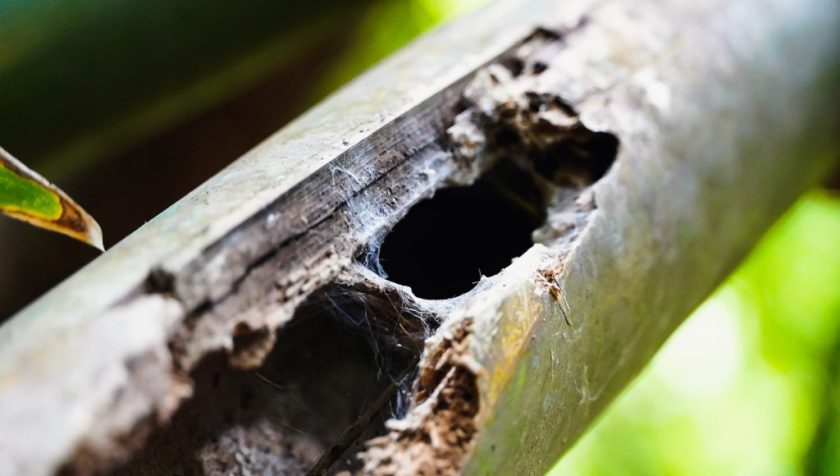|
Getting your Trinity Audio player ready...
|
Guest blog post by Dr. Narin Chomphuphuang
Bamboo is important to some animals as it can serve as a source of nutrition, shelter, and habitat. Inside a bamboo culm, we discovered a new genus of tarantula, which was collected from Mae Tho, Mueang Tak district, Tak province, in Thailand.

The discovered genus has not been previously studied by scientists; this is the first case of a genus of tarantula that shows the surprising specialization of living in bamboo stalks.
We named the new tarantula genus Taksinus in honor of the Thai king Taksin the Great. The name was chosen in recognition of Taksin the Great’s old name, Phraya Tak – governor of Tak province, which is where the new genus was discovered. After the Second Fall of Ayutthaya in 1767, Taksin the Great was the only king of the Thonburi Kingdom to become a key leader of Siam, prior to the establishment of Thailand.
The bamboo culm tarantula Taksinus bambus was found in Thailand by JoCho Sippawat, a nationally known wildlife YouTuber in Thailand with 2.45 million subscribers, who collaborated with Dr. Narin Chomphuphuang and Mr. Chaowalit Songsangchote, the arachnologists who studied and described the new genus.

In general, tarantulas from Southeast Asia can be either terrestrial or arboreal. Arboreal tarantulas spend time on different types of trees, but until now, researchers had not previously identified a tarantula found only on a specific tree type.
“These animals are truly remarkable; they are the first known tarantulas ever with a bamboo-based ecology,” Narin said.
The tarantulas were discovered inside mature culms of Asian bamboo stalks (Gigantochloa sp.), with nest entrances ranging in size from 2–3 cm to a large fissure, within a silk-lined tubular burrow, either in the branch stub or in the middle of the bamboo culms. All the tarantulas found living in the culms had built silken retreat tubes that covered the stem cavity.
The tarantulas cannot bore into bamboo stems; therefore, they depend on the assistance of other animals. Bamboo is preyed upon by a variety of animals, including the bamboo borer beetle, bamboo worm, bamboo-nesting carpenter bee, and small mammals such as rodents. Furthermore, bamboo cracking is primarily caused by rapid changes in moisture content induced by the atmosphere, uneven drying, or drenching followed by rapid drying or by human activities.

Taksinus is classified as a new genus within the Ornithoctoninae subfamily of Southeast Asian tarantulas. The discovery comes 104 years after Chamberlin defined the previous genus in this subfamily, Melognathus, in 1917.
What makes Taksinus distinct from all other Asian arboreal genera is the relatively short embolus of the male pedipalps, which is used to transport sperm to the female seminal receptacles during mating. In addition to morphology, its habitat type and distribution are also different from those of related species. While Asian arboreal tarantulas have been reported in Indonesia (Sangihe Island and Sulawesi), Malaysia, Singapore, Sumatra, and Borneo, Taksinus was discovered in northern Thailand, which is a new geographical location for those spiders.

“We examined all of the trees in the area where the species was discovered. This species is unique because it is associated with bamboo, and we have never observed this tarantula species in any other plant. Bamboo is important to this tarantula, not only in terms of lifestyle but also because it can only be found in high hill forests in the northern part of Thailand, at an elevation of about 1,000 m. It is not an exaggeration to say that they are now Thailand’s rarest tarantulas,” says Narin.
Few people realize how much of Thailand’s wildlife remains undocumented. Thai forests now cover only 31.64% of the country’s total land area. We are primarily on a mission to research and save the biodiversity and wildlife within these forests from extinction, especially species-specific microhabitats.
Research article:
Songsangchote C, Sippawat Z, Khaikaew W, Chomphuphuang N (2022) A new genus of bamboo culm tarantula from Thailand (Araneae, Mygalomorphae, Theraphosidae). ZooKeys 1080: 1-19. https://doi.org/10.3897/zookeys.1080.76876





